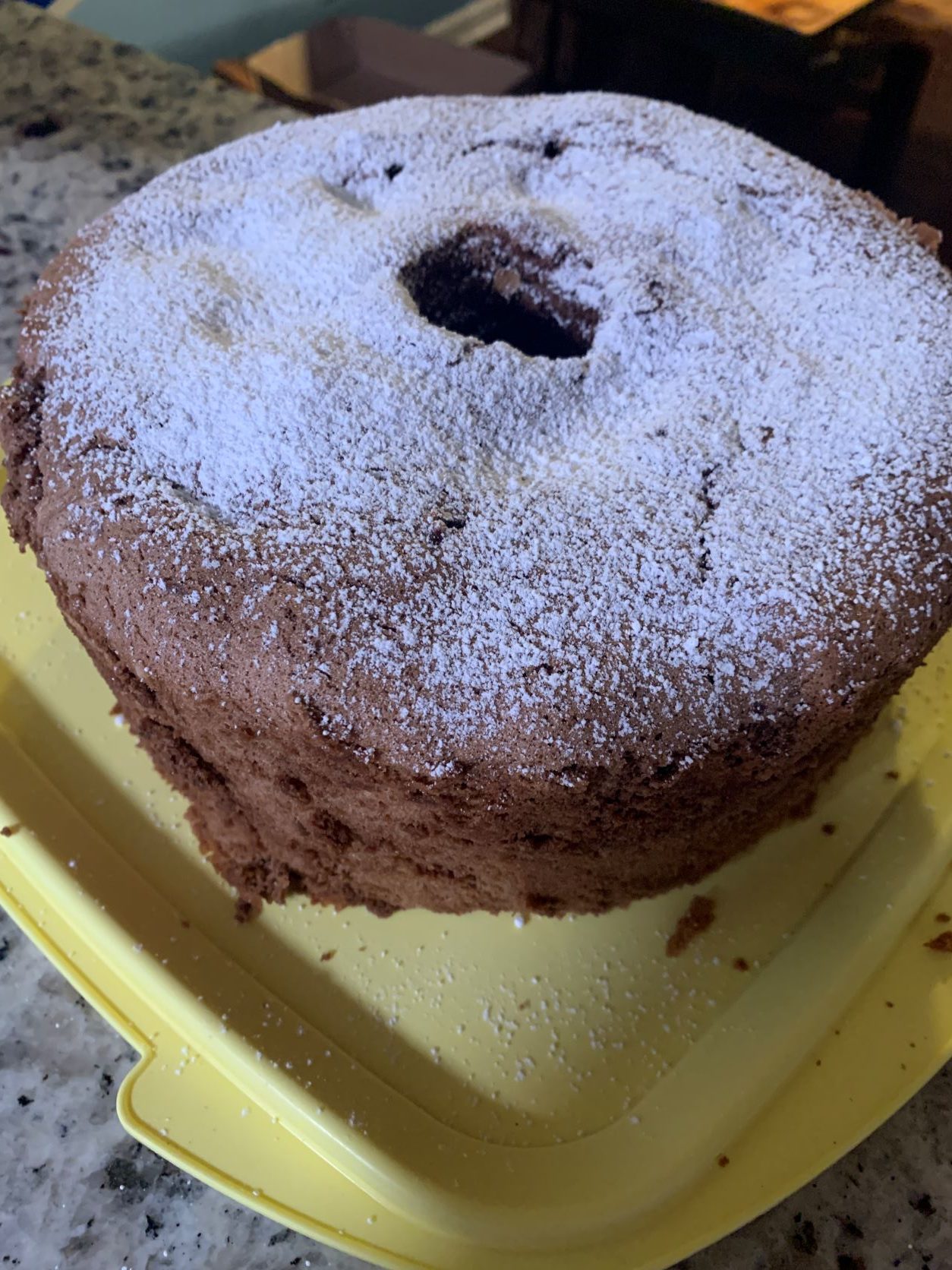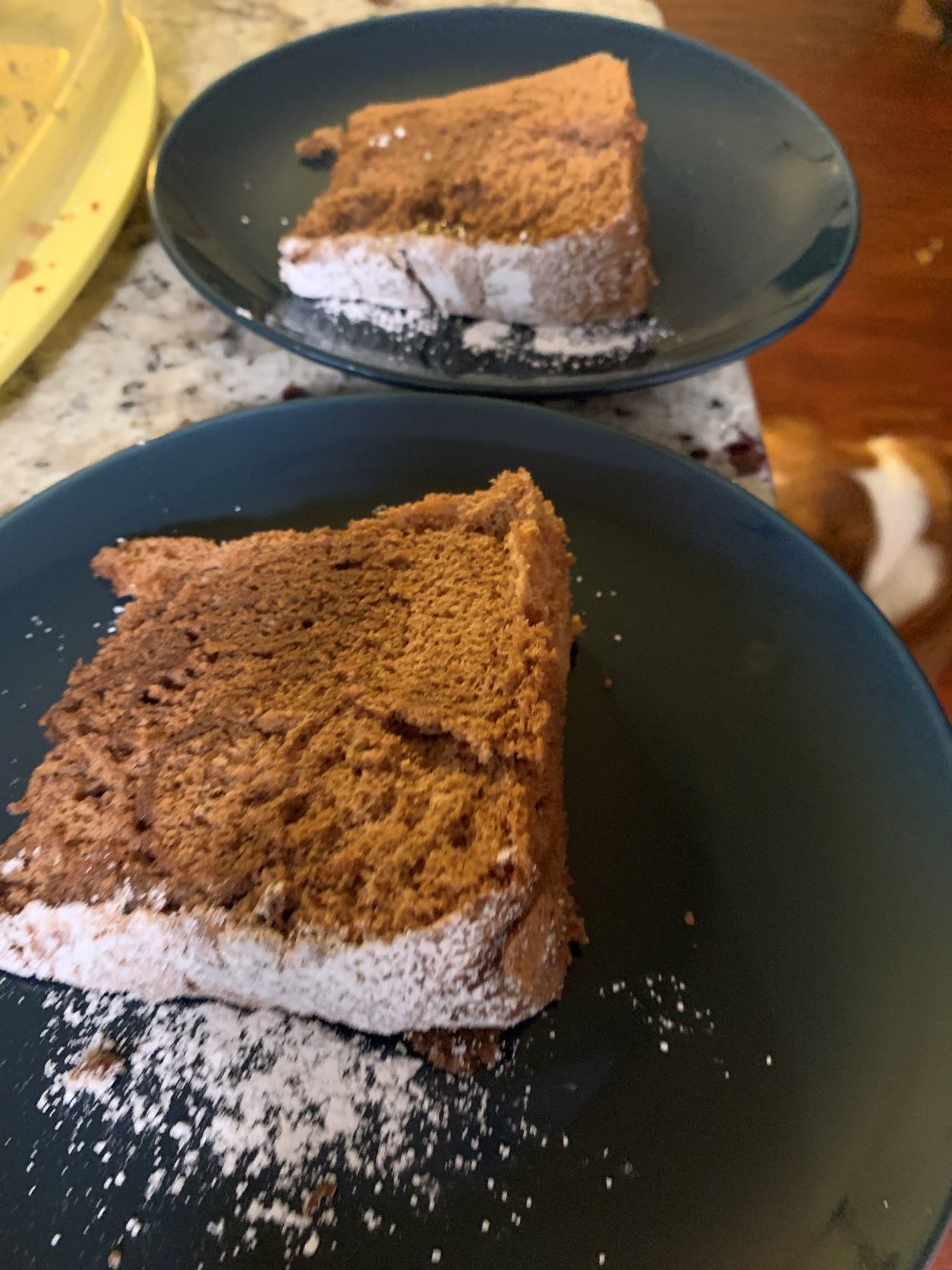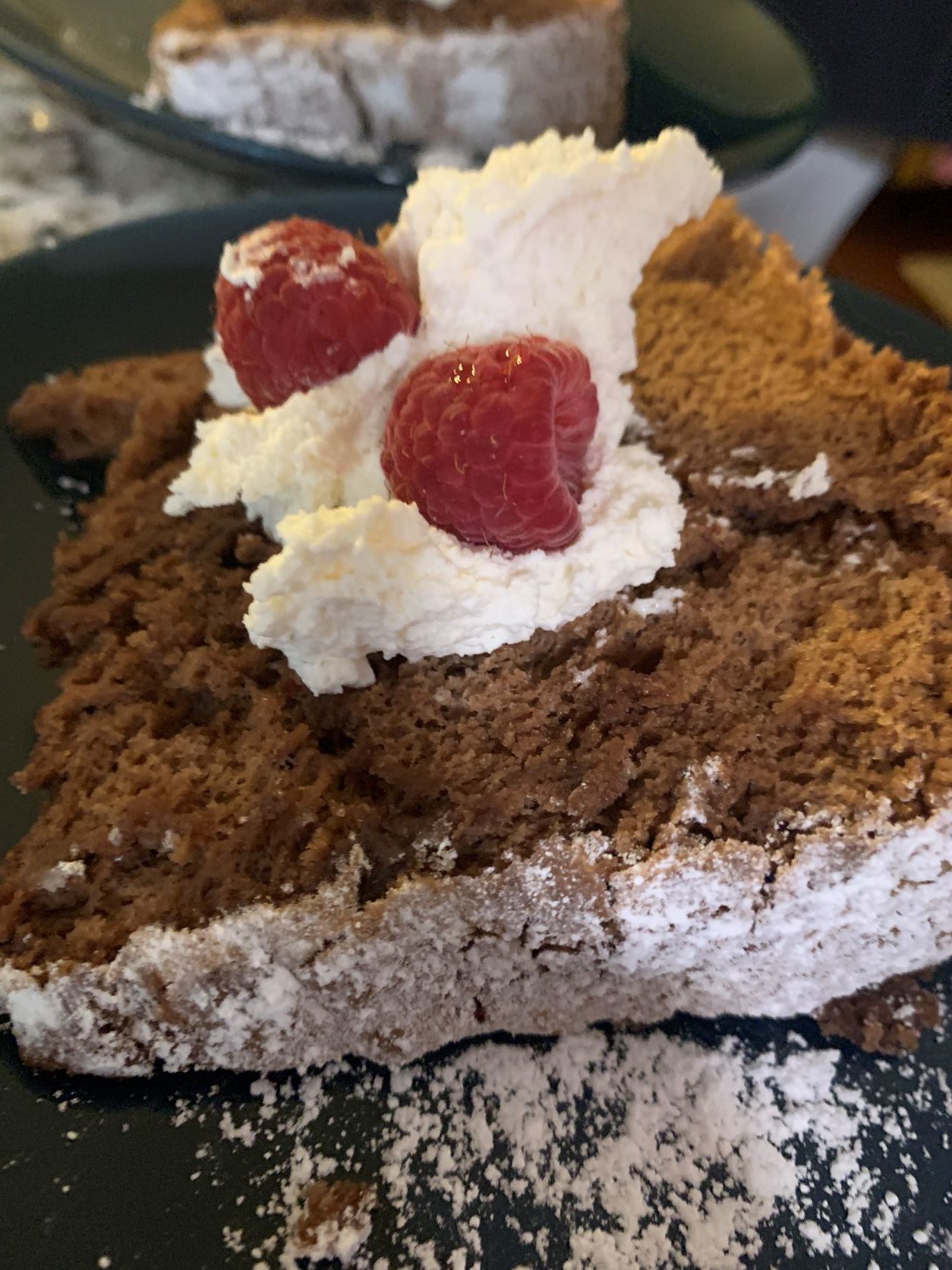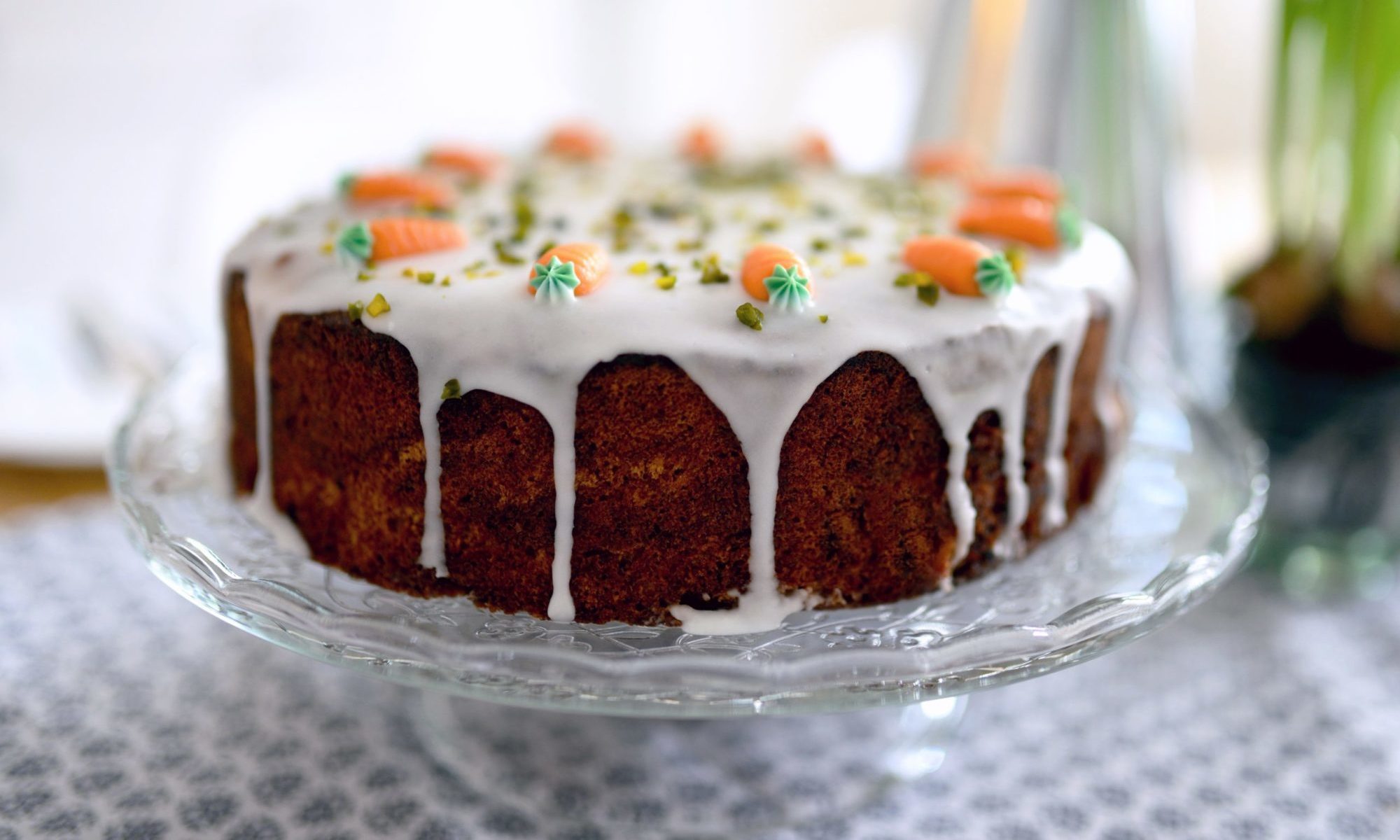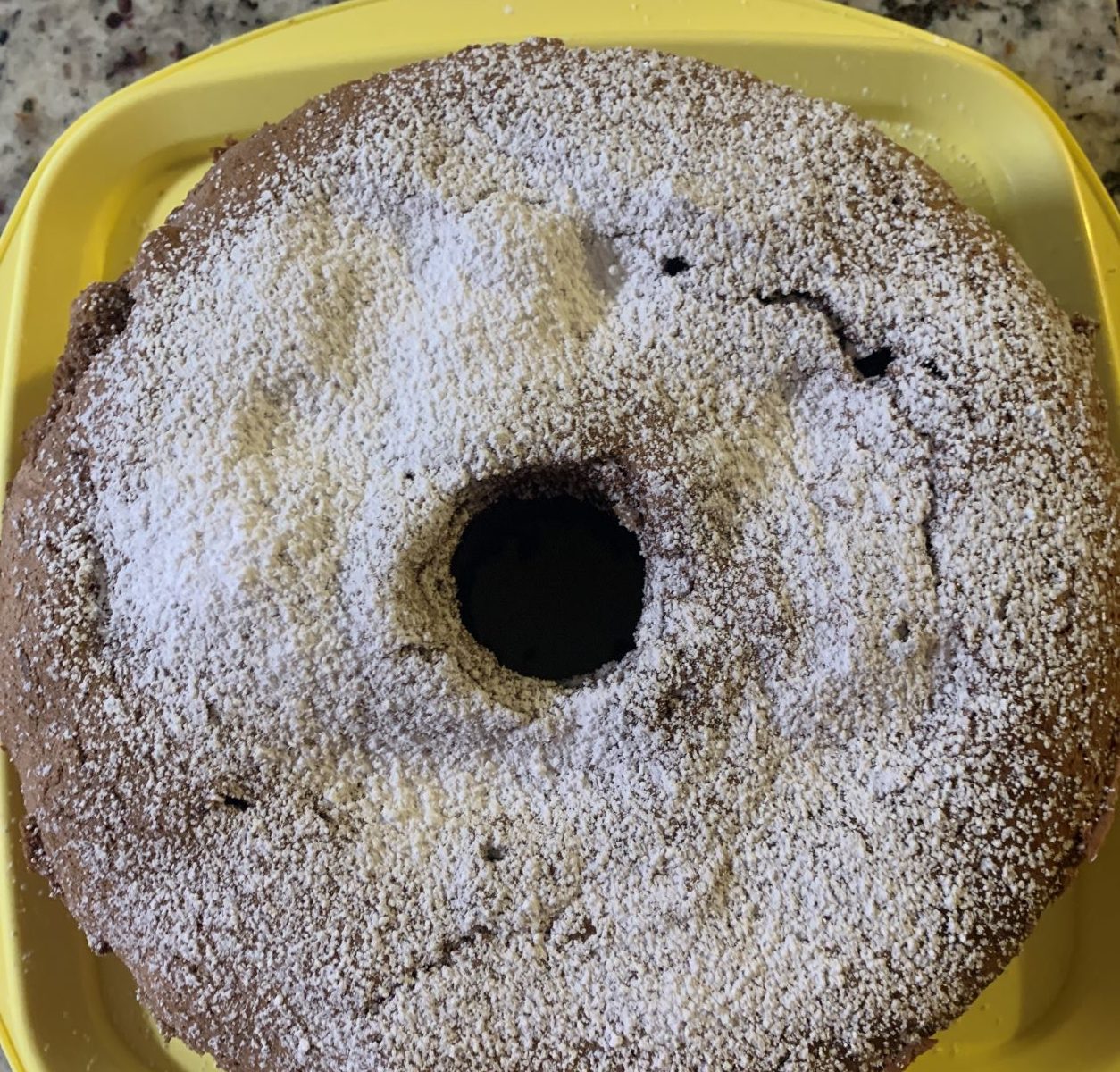I told a few people that I was embarking on this project, and my colleague Donna specifically requested to know when chocolate cake was in the offing. That took the Chocolate Chiffon Cake up the list.
So, is this cake Southern? Well, Southerners might like to claim it, but the origin of this cake is less disputed than many other classics. Traditionally, Harry Baker of California, an insurance salesman cum caterer is said to be the originator in 1927. Baker kept the popular cake’s recipe a secret, making a grapefruit version a staple at the Brown Derby Restaurant. In 1947, hHe sold the cake to General Mills, and a Betty Crocker pamphlet with 14 versions was introduced in 1948. Chiffon cake had it’s heyday in the 1950’s and 1960’s when it was a simple and fashionable desert. Versions abound, ranging from basic to grapefruit to rum to the chocolate I made this week.
However, maybe not all is at is it seems. A 1934 South Carolina newspaper had a recipe for Apricot Chiffon Cake, well before Baker sold his recipe. Further, the recipe bears a resemblance to the chiffon pies that were known as “sissy pies” or “fairy tarts” in the early 1900’s. So, similar concepts may have been in the air, but this cake was definitely popularized through its commercialization by Betty Crocker (who put out a cake mix for it in the 1960’s).
I continued on using a Southern Living recipe this week. And it wasn’t until I got into it that I realized I was missing supplies. In particular, I was missing a 10 cup tube pan, more commonly known as an angel food cake pan. I don’t particularly care for angel food cake, so it’s no wonder I didn’t have one. So I went on a little bit of an ingredient and tool spree, and got some stuff I’d need for the next few weeks.

So, this cake comes together as most cakes do. Combine the dry ingredients (flour, sugar, cocoa, baking powder, salt) and then add in egg yolks, coffee, a small amount of oil, and vanilla. Combine until smooth. Then the egg whites are beat to stiff peaks with some of cream of tartar and folded in. The egg whites do the bulk of the lifting work in this recipe, though there is a some light leavening with the baking powder. The batter fills about 2/3 of the tin, and it cooks for an hour at 325. When it comes out, I used the legs on the tin to balance it over a skillet and let it cool for two hours before removing the cake. Dust with powdered sugar and serve. It makes for a tall, imposing cake.
How is it? It’s just like my forebears in the 1960’s said: it is light. It has a delicate, chewy texture and a nice, light chocolate taste. The serving notes say to pair it with whipped cream and fresh raspberries, and I cosign on this. The sweetness of the cream and the tart raspberry pairs nicely with the bitterness of the coffee/chocolate. There are versions of this cake that split it and add a layer of cream in the middle. I think this would be fine if you were going to serve it that day; otherwise, I think it would make the light cake soggy.
You can see in some of the pictures where I didn’t quite get it all the way cooked, so it was a little denser than it would have been with a full cook out.


I didn’t mind it. For something I’d never had, this really spoke to me, and I really enjoyed its mouth feel (what a word, though true), and I think I’ll be making it again. And now I know that I have a showpiece in case I ever need to impress my husband’s work colleagues that he brings home from the ad agency in our Mad Men-era alternate lifestyle.

